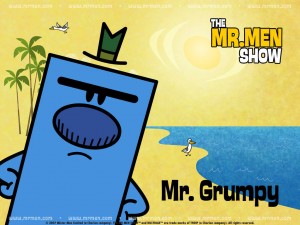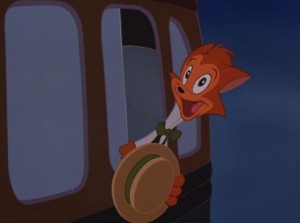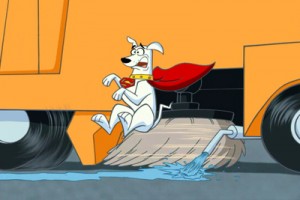Archive for August, 2010
CHILDHOOD REVISITED – CATS DON’T DANCE
Posted by kjohnson1585 in Animation, Childhood Revisited, Film, Music, Uncategorized, Writing on August 31, 2010
Cats Don’t Dance – 1997
Director: Mark Dindal
Starring: Scott Bakula, Jasmine Guy, Natalie Cole
Screenplay by: Mark Dindal, Robert Lence, Roberts Gannaway, Cliff Ruby, others
The Netflix blurb described Cats Don’t Dance as a “nostalgic animated version of classic MGM musicals.” That got me pretty stoked. As a youngin’, I had failed to make that connection since, while I was aware of the existence of musicals, I didn’t quite grasp their impact and significance in the overall development of American cinema and stardom. Also, watching a non-Disney animated film is always a treat, since you get to experience different themes, ideas, and movements. And, let’s be honest: Disney wouldn’t have released a film like this with such a lame title. Cats Don’t Dance? Really? The furry version of White Men Can’t Jump? Not exactly the warmest sounding title around.
NOSTALGIC LENS: I remember going to see this film by myself. It looked like a fun and eccentric romp through some crazy sets, and it was. Just TOO eccentric. Everything was going so fast and moving in blurs, harsh cuts, and speedy camera tricks that I had no idea what was going on. I remember none of the songs or secondary characters, save for the big-ass butler and really, really stupid ending sequence that actually irritated me, even in terms of cartoon logic. I’ll save that complaint – if it still holds – for the write-up.
DOES IT HOLD UP: I’ll say this: Cats Don’t Dance was not intended for the big screen. It’s a film tailor-made for the small screen – for closer observation. How often do you hear that?
Cats was marketed as a simplistic kids film of colors and frantic movement, talking animals and an Animaniacs-like exaggeration of animation, which simply put, means it’ll keep kids quiet for an hour. The movie, however, is a brightly-rainbow’d homage to not only the MGM classic musical, but the original musical nature of the early black & white/Merrie Melodies era of sing-songy cartoons. It’s a historical piece – a pretty goddamn esoteric one, but the signs are all over the celluloid.
Of course, young kids wouldn’t get it. Of course, parents wouldn’t understand what the film was delineating. The only people that may have been aware of the film’s aesthetic ties may have been historical animation fans, but that requires a clear and free understanding and appreciation of the history of American animation (and film) of a specific time period of a specific genre. That’s a rather egregious disconnect. In that way, Cats Don’t Dance is a failure, since it does little to draw its audience in and clarify its intent.
However, if you ARE aware of all of this, Cats Don’t Dance is a fresh, glorious treat of frantic action, a ballsy film against the slow, straight-forwardness of Disney or Pixar films. It’s tale – homely cat Danny travels to Hollywood to make it as a big time dancer and singer – is so typically cliche of one-third of the plot of most musicals, but that’s the point. Its entertainment draws from the energy of songs that break out of no where, of speedy dance numbers that develop into visual pastiches of its medium, of physical gags no longer utilized save in Spongebob. Check out the first ten minutes:
The simplicity of the opening montage segues into a much more exciting music piece. It’s like we’re going backwards; “Now Our Time Has Come” is such a 90s “hope song,” but “Danny’s Intro” is a play to exploring that new Hollywood space, a Wizard of Oz-like ballad of early triumph. Hello, 50s.
As I mentioned, Cats Don’t Dance homages the animated musical shorts as well. Remember when animated figures would grab random objects in a junkyard or alley and make awesome impromptu music?
I can’t help but think about this notorious cartoon when thinking about this film:
(You may have heard this on a certain South Park episode. Also – my man Tex directed this classic.)
The movie is filled with moments like this, as well as surprisingly sharp jokes about the time period. Sure, some are groaners (Rats being offended by the line “I smell a rat”), but there are some nifty ones, like when antagonist Darla Dimple (an evil Shirley Temple clone) only bites off the heads of animal crackers in front of Danny. (Darla’s offer, though, excites him so much that he starts eating the crackers too. In fact, the entire sequence between Danny and Darla is a lot of fun.)
Which is why the ending disappoints. Musicals, in general, seem to have weak, “JUST WRAP IT UP” type finales that’s all style and no substance. Whether Cats Don’t Dance played to that or not still doesn’t make it any better. Danny’s fight with big brute Max is exciting (and a marvel in animated form), but the ending sequence does nothing to build on that. Darla flicks a number of switches to try and ruin Danny and company’s final number, but it just makes it more awesome. It lacks the pluckiness of Danny’s earlier battle; none of the characters ‘fight’ through the chaos to deliver a great piece. Everything just works out. Ho-hum.
But for one hour, Cats Don’t Dance is a loose, whimsical, enjoyable film, a song/dance “cartoon-cartoon,” and not simply an animated live-action film. (The last animated film to employ such a free-sense of itself? The Emperor’s New Groove.) And it’s surprisingly relevant. Darla essentially screws Danny over; sure, Danny uses his skills and abilities to bounce back and win in the end, but he too had to do some sneaky shit to even earn that right (break into the theater of Darla’s movie premiere.) As much as we’d like to think that our abilities should speak for themselves, unfortunately in this job market, we may have to get a bit dirty before starting the cleansing process.
IN A NUTSHELL: I found myself really drawn to this film, so much so that I wanted to watch it a second time almost immediately. Sure, it’s flawed, but it’s a movie that’s one of its kind; a film that aims to be more aesthetically informative and historically nostalgic. Does it work 100%? No. But it does make you pine for the days where you can sing-a, along with the moon-a and the June-a, and the spring-a. While avoiding an anvil or six.
EDIT: I should have mentioned that Gene Kelly himself worked as a consultant on the film before he past away, which clearly contributes to the show’s wonderful energy and dance numbers.
NEXT UP: Homeward Bound: The Incredible Journey
Did We Miss Out? The Mr. Men Show/Krypto The Superdog
Posted by kjohnson1585 in Animation, Television, Uncategorized, Writing on August 9, 2010
A while back, Cartoon Network flirted briefly with programs aimed at preschoolers and kindergartners for early morning weekday TV in a block called Tickle U. It didn’t last long. Why? Because young-children based programming is HARD. Young children have fickle, hard-to-pin down attention spans, and coupled with parents keenly in-tune with what their toddlers are watching, it requires a tremendous amount of research, dedication, and experience. (I highly recommend Malcolm Gladwell’s The Tipping Point, as he delves deeply into the complexities that went into the successes of Sesame Street and Blue’s Clues.) The Disney Channel has experience. Nickelodeon has experience. Cartoon Network? The channel that, at the time, simply re-aired classic cartoons and more quirkier, new programming like Dexter’s Laboratory? Not so much.
I bring this up because on a particular slow day, I happen to catch the short lived Mr. Men Show (2008-2009) revival on Boomerang, which has become a hybrid of classic-classic cartoons and CN’s dumping ground of “shows that never made it”. It’s programming is uncanny, a mix of then-and-now, seemingly stuck in a temporal loop of cels and Flash files of various framerates. I love it. Mr. Man seemed destined for the early prime-time kids market, but like that idea, it fizzled in the water.

This picture alone tells you the potential hilarity we missed. OR Mr. Grumpy will not take your shit.
Mr. Man is a series of books by Roger Hargreaves that involve emotions/states of mind represented as colored-blob characters, forced into situations where their strictly one-dimensional attribute comes at odds with, oh, whatever Hargreaves felt like. These books were along side your Harold and the Purple Crayon and Good Night, Moon, and the bright, insane characters always appealed to me, as well as their blind commitment to their forced nature. They were cute, simple, and straight-forward; depending on the character, they could be a tad scary.
Imagine, then, you’re commissioned with the task of animating this into a long run series for a year. What do you do? Sure, you could go the ‘lesson-learning’ route, a route that Nick Jr. or Noggin certainly would have done. Cartoon Network animators aren’t the young-ish type, and so went with a unique and oft-bizarre story of a whole world of Mr. Man/Little Miss types, creating what -would- have been an almost infinite clash of pure-emotions. It was animated improv: “You play a perpetually angry person; you play a naughty tease; the setting is a nightclub and you both left your wallets at home. Go!”
The result was a goofy, self-aware, eccentric assault of really brief gags, skits, and musical interludes all centered around two themes, lasting for twelve minutes each. The first was yard work; the second, preparing a parade. Unlike the very simplistic, kind, and melodic flow of shows like Oswald and Dora the Explorer, Mr. Man had surprising rich gags (Mr. Quiet’s understated commentary was a gem and poised to have him the show’s star) and some bizarrely risque material, like Miss Naughty’s light hints at sexual promiscuity – which ended up mostly as practical jokes. But it’s there, and quite hilarious when you pick up on it. The Mr. Men Show was erratic, to be sure, and the seemingly random cuts from skits to musical cues to five-second shorts was rather hard to swallow. But underneath the exterior was a delightful and subtle bunch of jokes.
DID WE MISS OUT? I’d say we did; although parents might “enjoy” it more than their children.
——-
I wish I had similar sentiments for Krypto The Superdog (2005-2006), a clear throwback to the era of Saturday Morning Cartoons. We follow the exploits of a canine house pet who rocks Superman powers and fights evil cats and alien animals and teach lessons. The problem is that animated shows today are self-aware, and when a cartoon tries to engage in its campiness and play it straight – instead of exploiting it – its cheesiness becomes grating.
In one episode of Krypto, we’re already forced to endure lessons about judging people (well, animals) and “great power coming with great responsibility,” the latter lesson gained from what I assumed to be Superdog’s future sidekick, a cat named Streaky. (This particular episode was pointedly awkward and borderline disturbing, and the awful line-readings and less-than-stellar animation didn’t help.) It’s not a stretch to assume this show was definitely for children (perhaps the older set), but even they may find it boring, as today’s youth are so adept with Twitter and Youtube and any other animated program that breaks the 90s mold. For something made in the 21st century that had such dated aesthetics and writing, one can’t help but experience the show with this —> :/ expression.
DID WE MISS OUT? Nah. With not one single interesting character on the show, it’s probably better off in the distant backburner.
———
I’ll be doing this feature every so often I catch an episode of something on Boomerang or CN late night or something.



